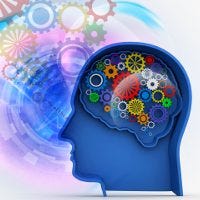The Expectation of Memory
Memory exists as a source of immeasurable joy and pleasure with loved ones and children and laughter and achievements parading across our conscious lives, even as it holds the repository of one of our greatest fears, that of its loss in dementia, Alzheimer's, and brain trauma. The very substance of who we define ourselves to be is constructed out of our memories, as they provide a seemingly unbroken chain of evidence that we are who we say we are. Take away our memories, show them to be anything less than an absolute source for our rationalized self-narratives, and the very foundation of our lives feels like it trembles.
Thankfully we are not just our mental lives, we have bodies as well. More accurately, we each are a mind that resides and expresses itself within and through a body. The very nature of how our minds construct our perception of the world is through the mechanisms of the body. Within this limited structure, we simply do not consciously perceive all that is occurring in our lives, not in the moment nor in retrospect. As Daniel Schacter (2002) puts it:
"As I showed in my earlier book, Searching for Memory, we tend to think of memories as snapshots from family albums that, if stored properly, could be retrieved in precisely the same condition in which they were put away. But we now know that we do not record our experiences the way a camera records them. Our memories work differently. We extract key elements from our experiences and store them. We then recreate or reconstruct our experiences rather than retrieve copies of them. Sometimes, in the process of reconstructing we add on feelings, beliefs, or even knowledge we obtained after the experience. In other words, we bias our memories of the past by attributing to them emotions or knowledge we acquired after the event."
What is Memory
Memory is not then a simple matter of paying attention and recording events, it's a continually recreative process. Building those memories for recall is the subject of an experiment out of Penn State and published in the journal Cognition. In this experiment, participants watched video of a group of people playing basketball with different colored balls. According to conventional theories of memory where attention is the largest and most decisive variable:
"Object-encoding theory says the participants should remember all the information about the scene they have just witnessed - including the color of any balls. Feature-encoding theory says it is only necessary to remember the color of a specific ball if it is important to the task at hand" (Paddock, 2016).
In each of the watched recorded scenarios, the participants were tasked with keeping track of a particular colored ball, the target, and after a short time another ball was introduced as the "distractor." After 31 different scenes were played out, the 32nd introduced a variation where instead of simply counting the times the target ball was passed, participants also needed to keep track of the color of the target ball. Interestingly, fully 37% of the participants chose the wrong color and of those, the majority chose the color of the distractor ball.
This led researchers to conclude that the participants were holding memories of both colors, but were not attributing the color to a particular ball. This negates both the "object-encoding theory" as the participants weren't remembering accurately all the information and negates the "feature-encoding theory" as the color of both balls was being kept in memory. When the experiment was rerun with participants being instructed at the beginning to record both the number of times the target ball was passed and its color, only 14%, rather than 37%, got it wrong. Further, the experiment was run again with a new group and the results were similar.
The drop in errors led the researchers to conclude that "much of what we remember is also based on our expectation of how that information might be useful in the future. Once the participants realized it was important to remember the color of the ball, their recall accuracy improved" (Paddock, 2016).
We can use this information as a contribution to our understanding of how we live our lives. Our memories are not whole replications of our experiences through the mechanism of attention/perception. We take in far more information than we are at any given moment aware of and that information is accessible and attributed to conscious memory based, at least in part, on whether it is felt to be important for our futures.
When we engage in dialogue with others and find ourselves getting upset at the lapses in memory of others or, more humbly, ourselves, it is important to keep in mind how memory works. We are not, thankfully, computers regurgitating information based on algorithmic instructions. The shape of our thoughts, the stories of our lives and the memories that provide those thoughts/stories with substance are as much about what is perceived as being needed for our futures than it is about providing accurate portrayals of our experiences.
Our minds work through and within the interactions of our bodies and relational connections. Our needs, and therefore how and what we remember, are as varied as the relationships guiding what we focus on.
Resources:
Paddock, C. (2016, March 30). "Memory encoding may be influenced by expectation." Medical News Today. Retrieved from
http://www.medicalnewstoday.com/articles/308434.php.
Schacter, Daniel L. (2002-05-07). The Seven Sins of Memory: How the Mind Forgets and Remembers (p. 9). Houghton Mifflin Harcourt. Kindle Edition.
Further reading:
Merleau-Ponty, Maurice (2004-07-31). The World of Perception (p. 51). Taylor and Francis. Kindle Edition.




